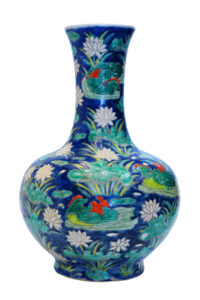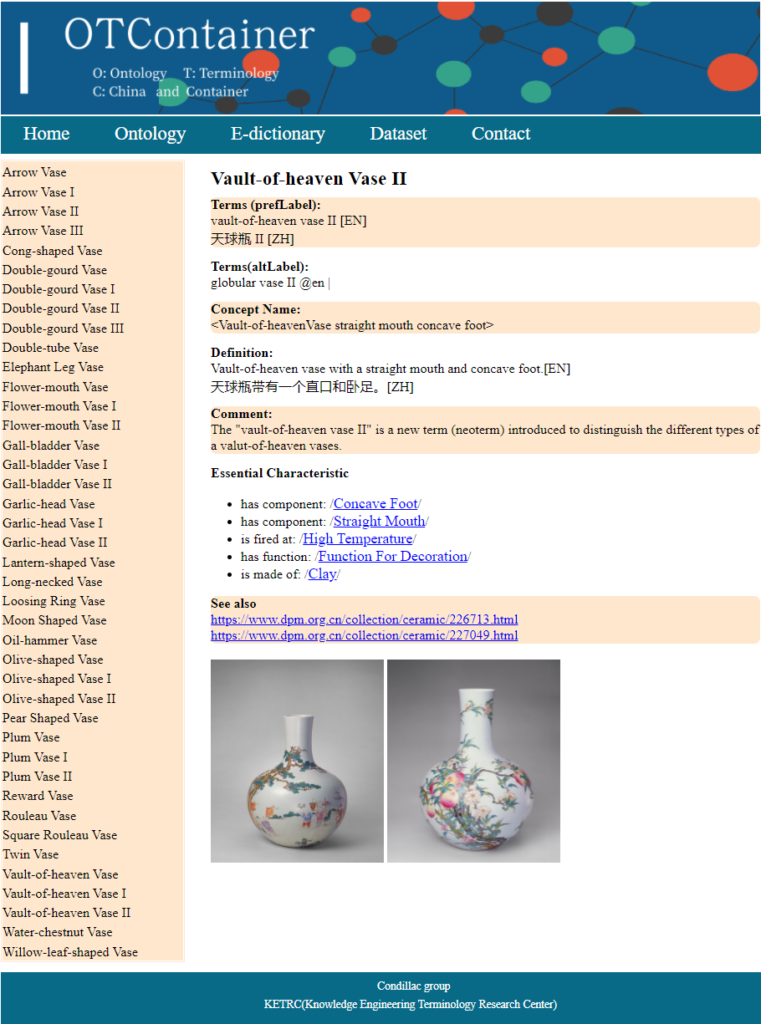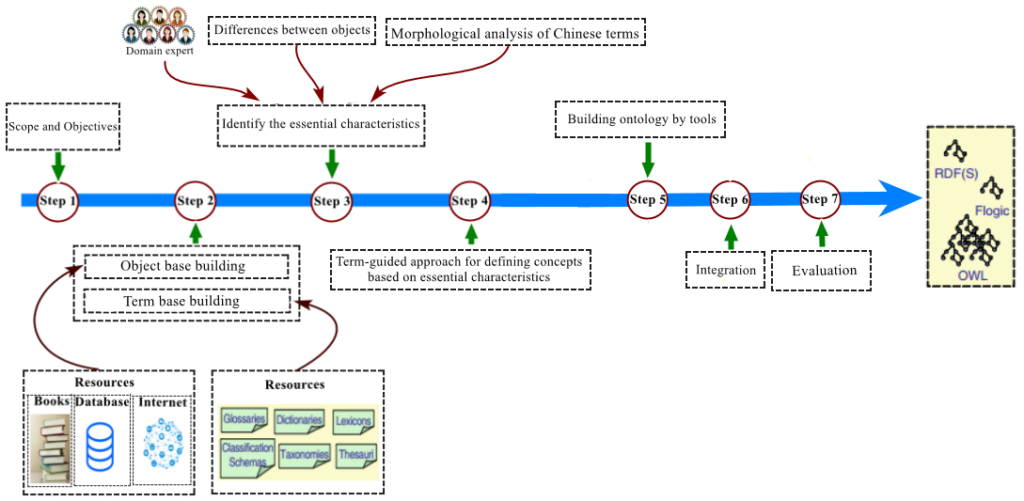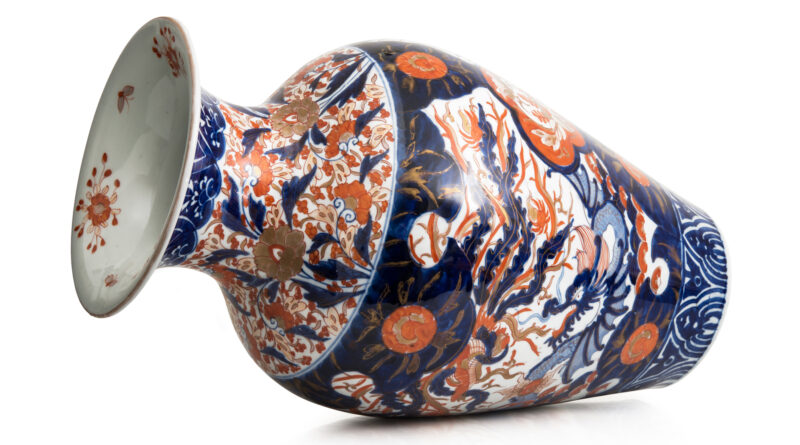Using ISO and Semantic Web Standard for Building a Multilingual Terminology e-Dictionary: A use case of Chinese Ceramic Vases
Using ISO and Semantic Web Standard for Building a Multilingual Terminology e-Dictionary: A Use Case of Chinese Ceramic Vases
Tong Wei, Christophe Roche, Maria Papadupoulou, Yangli Jia
Do you know the term “arrow vase” and “贯耳瓶”?Do you know what they designate? Imagine when visiting a museum, you encounter a beautiful ceramic vase, but you don’t know its name and characteristics. In this situation, how do you communicate with foreign friends? If there were a tool containing different information, such as terms, definitions, characteristics, and images, it would be very helpful for our communication. In the following, we will introduce a new tool: a multilingual terminology e-Dictionary.
—A standardized multilingual terminology system is a major tool to help scholars from different language backgrounds communicate.—
Let us note that cultural heritage is the cultural carrier of a country or community, which carries the civilization of the past society. Due to different languages and cultures, it is difficult for different cultural communities to understand the civilization carried by cultural heritage. Making the implicit culture contained in cultural heritage explicit is more conducive to the exchange and learning of traditional culture. A standardized multilingual terminology system is a major tool to help scholars from different language backgrounds communicate. In the digital age, how to update the paradigm of terminology tools and better serve the international exchange and cooperation of cultural heritage is a key content of terminology work. Computational ontologies have been put forward as an infrastructure of building terminological resources, from healthcare and medical science to cultural heritage and the humanities. Therefore, the combination of terminology and ontology provides a new perspective for updating terminology tools.
What is the multilingual terminology e-Dictionary?

Many people can think a multilingual terminology e-Dictionary is same as a lexicography dictionary. No, they are different. Let us introduce what is a terminology e-dictionary? A multilingual terminology e-dictionary is a digital communication tool different from the traditional dictionary. The components of a multilingual terminology e-dictionary depend on the knowledge base that is often an ontology. But a multilingual terminology e-dictionary should at least include terms, definitions, essential characteristics, and concepts. Following the principles of Terminology (ISO 1087-1 and ISO 704), a term is the “verbal designation of a general concept in a specific subject field” (ISO 1087-1). A concept is a “unit of knowledge created by a unique combination of characteristics” (ISO 1087-1). Characteristic is defined as the “abstraction of a property of one or more objects.” The essential characteristic is indispensable for understanding the concept in a particular field of knowledge. A definition is a descriptive representation of a concept that serves to differentiate it from related concepts. The multilingual terminological e-dictionary results from terminology work that includes naming and defining things. The naming thing focuses on identifying the term to denote the things, whereas the defining thing focuses on identifying the concept denoted by the term.

Why do we need to build it?
Following the background of cultural heritage communication, you can know why we need to build it. Why we do not highlight the reason in this section? A terminology is a tool for communication. With the strengthening of international cooperation and the exchange of cultural heritage, experts in cultural heritage are increasingly demanding multilingualism of terminology dictionaries. However, the traditional paper-based term resources are often concentrated in one language. Although there are some multilingual paper-based term dictionaries, such dictionaries are only a simple list of terms lacking a clear definition of terms and the concept of term reference. The multilingual paper-based terminology dictionaries cannot help scholars from different language backgrounds better understand cultural heritage. The multilingual terminology e-dictionary can be expanded according to the characteristics of the knowledge base. It has certain expansibility and can adapt to different fields of knowledge. Therefore, the multilingual term dictionary is a new paradigm application born in the digital environment to meet the needs of cultural heritage communication.

How to build it?
How to build a multilingual terminological e-dictionary is a matter of concern. We will introduce it in the following. The core of building a multilingual terminology e-dictionary is to construct a domain ontology-based knowledge base. As a multilingual terminology e-dictionary knowledge base, the construction of domain ontology relies on ISO principles of terminology and adopts the term-concept-characteristic method. Its core is constructing ontology through the formal expression of concepts denoted by terms. The workflow includes seven steps: 1) identify the scope and objectives; 2) identify terms and objects;3) identify the essential characteristics; 4) define concepts based on essential characteristics; 5) build ontology by tools; 6) integrate; 7) evaluate. Each of the steps has different tasks. The core step is to identify the essential characteristics corresponding to the rigid properties. The method of identifying essential characteristics is often to identify the differences between objects. The term-concept-characteristic way can make fine-grained ontology for special issues: such as building knowledge-base terminological resources. The e-Dictionary is developed following the B/S architecture model, which includes three layers: the user, middle, and data layers. This architecture uses JavaScript instead of Jena parsing ontology to provide domain knowledge for the multilingual terminology e-dictionary.

The original article: Wei T, Roche C, Papadopoulou M, Jia Y. Using ISO and Semantic Web standard for building a multilingual terminology e-Dictionary: A use case of Chinese ceramic vases. Journal of Information Science. June 2021. doi:10.1177/01655515211022185.
Cite this article in APA as: Jia, Y., Papadupoulou, M., Roche, C., & Wei, T. (2022, July 15). Using ISO and semantic web standard for building a multilingual terminology e-dictionary: a use case of chinese ceramic vases. Information Matters, Vol. 2, Issue 7. https://informationmatters.org/2022/07/using-iso-and-semantic-web-standard-for-building-a-multilingual-terminology-e-dictionary-a-use-case-of-chinese-ceramic-vases/





